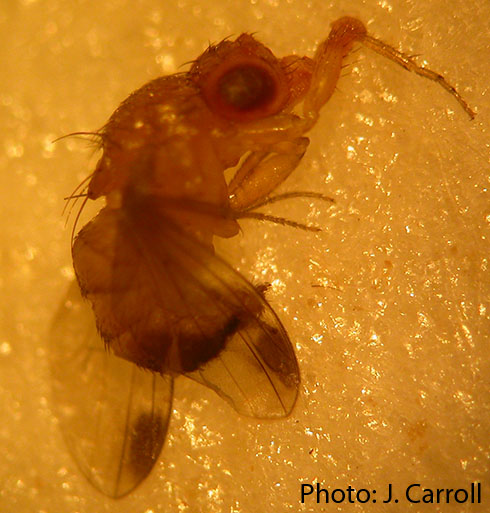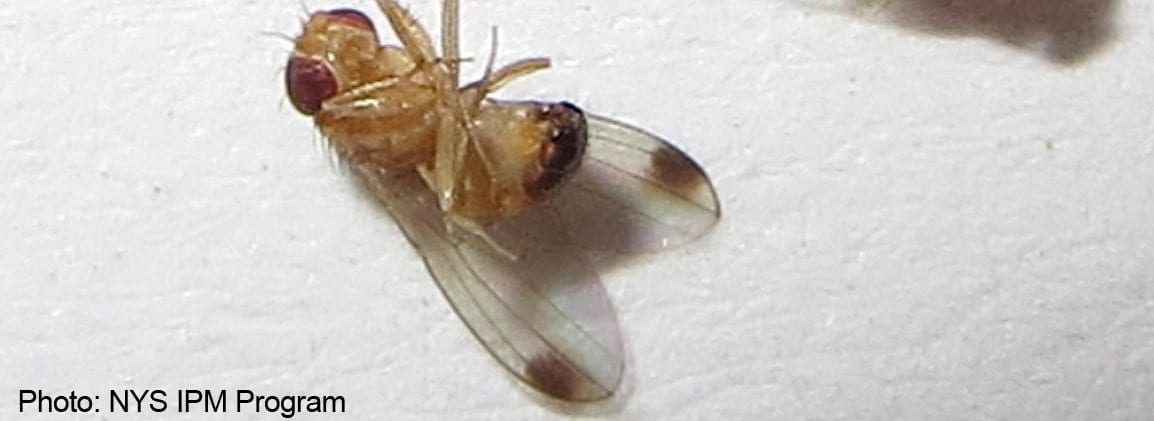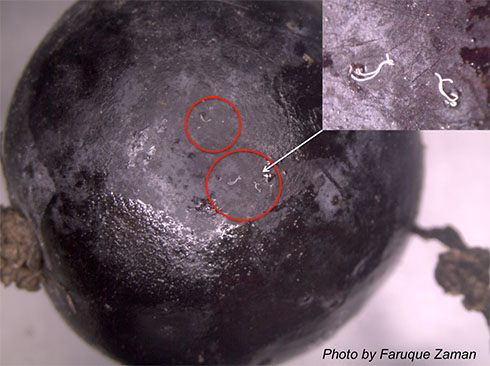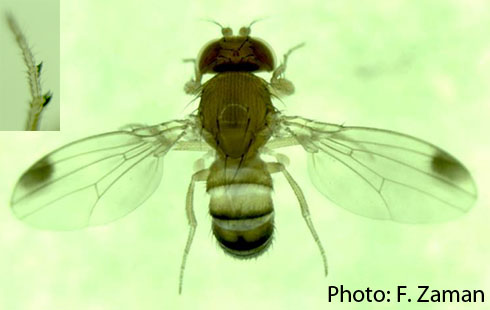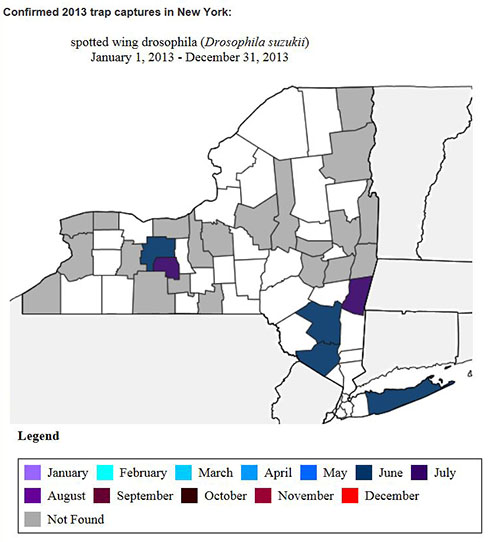A single spotted wing drosophila male was caught in a trap collected on July 22 in day neutral strawberries in Wayne County by Juliet Carroll, NYS IPM Program, Cornell Cooperative Extension. Berry crops at risk for infestation include day neutral strawberries, blackberries, raspberries, and blueberries. Berry growers in the area should consider putting a management program into place. In addition, a single male SWD was caught in a trap set in sweet cherry at the same location. Sweet cherry harvest is winding down and fruit destined for farm market shelves will benefit from cold temperature storage or display cases. (Accumulated GDD 1374, day length 14:48)
